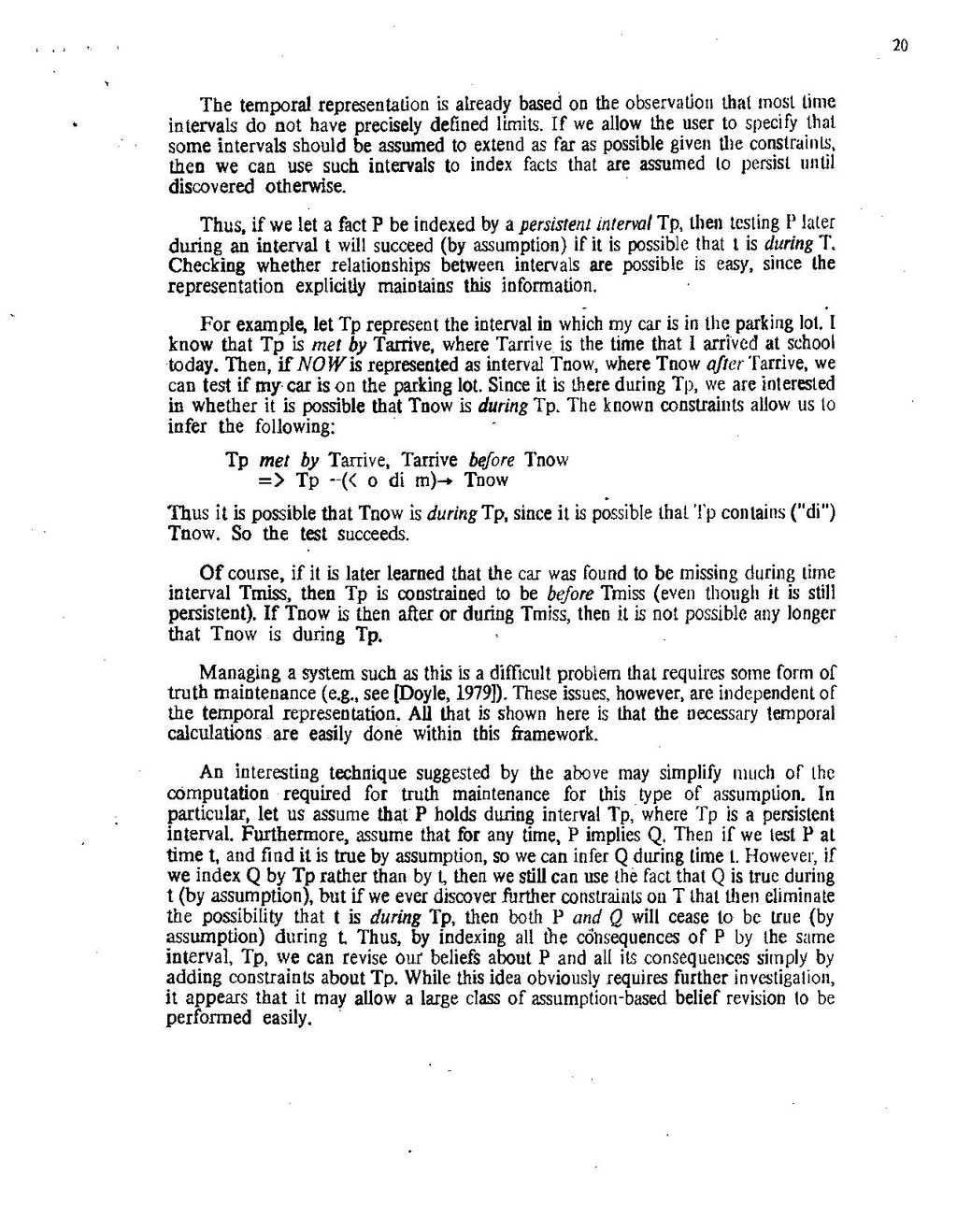The temporal representation is already based on the observation that most lime intervals do not have precisely defined limits. If we allow the user to specify that some intervals should be assumed to extend as far as possible given the constraints, then we can use such intervals to index facts that are assumed to persist unUL discovered otherwise.
Thus, if we let a fact P be indexed by a persistent interval Tp, then testing P later during an interval t will succeed (by assumption) if it is possible that t is during T. Checking whether relationships between intervals are possible is easy, since the representation explicitly maintains this information.
For example, let Tp represent the interval in which my car is in the parking lot. I know that Tp is met by Tarrive, where Tarrive is the time that I arrived at school today. Then, if NOW is represented as interval Tnow, where Tnow after Tarrive, we can test if my car is on the parking lot. Since it is there during Tp, we are interested in whether it is possible that Tnow is during Tp. The known constraints allow us lo in fer the following:
Tp met by Tarrive, Tarrive before Tnow
=> Tp --(< o di m)– Toow Thus it is possible that Tnow is during Tp, since it is possible that Tp contains ("di") Tnow. So the test succeeds.
Of course, if it is later learned that the car was found to be missing during time interval Tmiss, then Tp is constrained to be before Tmiss (even though it is still persistent). If Tnow is then after or during Tmiss, then it is not possible any longer that Tnow is during Tp.
Managing a system such as this is a difficult problem that requires some form of truth maintenance (e.g., see [Doyle, 1979]). These issues, however, are independent of the temporal representation. All that is shown here is that the necessary temporal calculations are easily done within this framework.
An interesting technique suggested by the above may simplify much of the computation required for truth maintenance for this type of assumption. In particular, let us assume that P holds during interval Tp, where Tp is a persistent interval. Furthermore, assume that for any time, P implies Q. Then if we lest P at time t, and find it is true by assumption, so we can infer during time t. However, if we index Q by Tp rather than by t, then we still can use the fact that is true during t(by assumption), but if we ever discover further constraints on T that then eliminate the possibility that t is during Tp, then both P and will cease to be true (by assumption) during t. Thus, by indexing all the consequences of P by the same interval, Tp, we can revise our beliefs about P and all its consequences simply by adding constraints about Tp. While this idea obviously requires further investigation, it appears that it may allow a large class of assumption-based belief revision to be performed easily.
